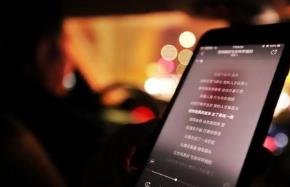环球最新:Python+OpenCV实现图像识别替换功能详解
OpenCV-Python是一个Python库,旨在解决计算机视觉问题。
 【资料图】
【资料图】
OpenCV是一个开源的计算机视觉库,1999年由英特尔的Gary Bradski启动。Bradski在访学过程中注意到,在很多优秀大学的实验室中,都有非常完备的内部公开的计算机视觉接口。这些接口从一届学生传到另一届学生,对于刚入门的新人来说,使用这些接口比重复造轮子方便多了。这些接口可以让他们在之前的基础上更有效地开展工作。OpenCV正是基于为计算机视觉提供通用接口这一目标而被策划的。
安装opencv
pip3 install -i https://pypi.doubanio.com/simple/ opencv-python
思路:
1、首先区分三张图片:
base图片代表初始化图片;
template图片代表需要在大图中匹配的图片;
white图片为需要替换的图片。
2、然后template图片逐像素缩小匹配,设定阈值,匹配度到达阈值的图片,判定为在初始图片中;否则忽略掉。
3、匹配到最大阈值的地方,返回该区域的位置(x,y)
4、然后用white图片resize到相应的大小,填补到目标区域。
match函数:
"""检查模板图片中是否包含目标图片"""
def make_cv2(photo1, photo2):
global x, y, w, h, num_1,flag
starttime = datetime.datetime.now()
#读取base图片
img_rgb = cv2.imread(f"{photo1}")
#读取template图片
template = cv2.imread(f"{photo2}")
h, w = template.shape[:-1]
print("初始宽高", h, w)
res = cv2.matchTemplate(img_rgb, template, cv2.TM_CCOEFF_NORMED)
print("初始最大相似度", res.max())
threshold = res.max()
""",相似度小于0.2的,不予考虑;相似度在[0.2-0.75]之间的,逐渐缩小图片"""
print(threshold)
while threshold >= 0.1 and threshold <= 0.83:
if w >= 20 and h >= 20:
w = w - 1
h = h - 1
template = cv2.resize(
template, (w, h), interpolation=cv2.INTER_CUBIC)
res = cv2.matchTemplate(img_rgb, template, cv2.TM_CCOEFF_NORMED)
threshold = res.max()
print("宽度:", w, "高度:", h, "相似度:", threshold)
else:
break
"""达到0.75覆盖之前的图片"""
if threshold > 0.8:
loc = np.where(res >= threshold)
x = int(loc[1])
y = int(loc[0])
print("覆盖图片左上角坐标:", x, y)
for pt in zip(*loc[::-1]):
cv2.rectangle(
img_rgb, pt, (pt[0] + w, pt[1] + h), (255, 144, 51), 1)
num_1 += 1
endtime = datetime.datetime.now()
print("耗时:", endtime - starttime)
overlay_transparent(x, y, photo1, photo3)
else:
flag = Falsereplace函数:
"""将目标图片镶嵌到指定坐标位置"""
def overlay_transparent(x, y, photo1, photo3):
#覆盖图片的时候上下移动的像素空间
y += 4
global w, h, num_2
background = cv2.imread(f"{photo1}")
overlay = cv2.imread(f"{photo3}")
"""缩放图片大小"""
overlay = cv2.resize(overlay, (w, h), interpolation=cv2.INTER_CUBIC)
background_width = background.shape[1]
background_height = background.shape[0]
if x >= background_width or y >= background_height:
return background
h, w = overlay.shape[0], overlay.shape[1]
if x + w > background_width:
w = background_width - x
overlay = overlay[:, :w]
if y + h > background_height:
h = background_height - y
overlay = overlay[:h]
if overlay.shape[2] < 4:
overlay = np.concatenate([overlay, np.ones((overlay.shape[0], overlay.shape[1], 1), dtype=overlay.dtype) * 255],axis=2,)
overlay_image = overlay[..., :3]
mask = overlay[..., 3:] / 255.0
background[y:y + h,x:x + w] = (1.0 - mask) * background[y:y + h,x:x + w] + mask * overlay_image
# path = "result"
path = ""
cv2.imwrite(os.path.join(path, f"1.png"), background)
num_2 += 1
print("插入成功。")
init()每次执行需要初始化x,y(图片匹配初始位置参数),w,h(图片缩放初始宽高)
x = 0
y = 0
w = 0
h = 0
flag = True
threshold = 0
template = ""
num_1 = 0
num_2 = 0
photo3 = ""
"""参数初始化"""
def init():
global x, y, w, h, threshold, template,flag
x = 0
y = 0
w = 0
h = 0
threshold = 0
template = ""
完整代码
import cv2
import datetime
import os
import numpy as np
x = 0
y = 0
w = 0
h = 0
flag = True
threshold = 0
template = ""
num_1 = 0
num_2 = 0
photo3 = ""
"""参数初始化"""
def init():
global x, y, w, h, threshold, template,flag
x = 0
y = 0
w = 0
h = 0
threshold = 0
template = ""
"""检查模板图片中是否包含目标图片"""
def make_cv2(photo1, photo2):
global x, y, w, h, num_1,flag
starttime = datetime.datetime.now()
img_rgb = cv2.imread(f"{photo1}")
template = cv2.imread(f"{photo2}")
h, w = template.shape[:-1]
print("初始宽高", h, w)
res = cv2.matchTemplate(img_rgb, template, cv2.TM_CCOEFF_NORMED)
print("初始最大相似度", res.max())
threshold = res.max()
""",相似度小于0.2的,不予考虑;相似度在[0.2-0.75]之间的,逐渐缩小图片"""
print(threshold)
while threshold >= 0.1 and threshold <= 0.83:
if w >= 20 and h >= 20:
w = w - 1
h = h - 1
template = cv2.resize(
template, (w, h), interpolation=cv2.INTER_CUBIC)
res = cv2.matchTemplate(img_rgb, template, cv2.TM_CCOEFF_NORMED)
threshold = res.max()
print("宽度:", w, "高度:", h, "相似度:", threshold)
else:
break
"""达到0.75覆盖之前的图片"""
if threshold > 0.8:
loc = np.where(res >= threshold)
x = int(loc[1])
y = int(loc[0])
print("覆盖图片左上角坐标:", x, y)
for pt in zip(*loc[::-1]):
cv2.rectangle(
img_rgb, pt, (pt[0] + w, pt[1] + h), (255, 144, 51), 1)
num_1 += 1
endtime = datetime.datetime.now()
print("耗时:", endtime - starttime)
overlay_transparent(x, y, photo1, photo3)
else:
flag = False
"""将目标图片镶嵌到指定坐标位置"""
def overlay_transparent(x, y, photo1, photo3):
y += 0
global w, h, num_2
background = cv2.imread(f"{photo1}")
overlay = cv2.imread(f"{photo3}")
"""缩放图片大小"""
overlay = cv2.resize(overlay, (w, h), interpolation=cv2.INTER_CUBIC)
background_width = background.shape[1]
background_height = background.shape[0]
if x >= background_width or y >= background_height:
return background
h, w = overlay.shape[0], overlay.shape[1]
if x + w > background_width:
w = background_width - x
overlay = overlay[:, :w]
if y + h > background_height:
h = background_height - y
overlay = overlay[:h]
if overlay.shape[2] < 4:
overlay = np.concatenate([overlay, np.ones((overlay.shape[0], overlay.shape[1], 1), dtype=overlay.dtype) * 255],axis=2,)
overlay_image = overlay[..., :3]
mask = overlay[..., 3:] / 255.0
background[y:y + h,x:x + w] = (1.0 - mask) * background[y:y + h,x:x + w] + mask * overlay_image
# path = "result"
path = ""
cv2.imwrite(os.path.join(path, f"1.png"), background)
num_2 += 1
print("插入成功。")
init()
if __name__ == "__main__":
photo1 = "1.png"
photo2 = "3.png"
photo3 = "white.png"
while flag == True:
make_cv2(photo1, photo2)
overlay_transparent(x, y, photo1, photo3)执行结果:
到此这篇关于Python+OpenCV实现图像识别替换功能详解的文章就介绍到这了,更多相关Python OpenCV图像识别替换内容请搜索脚本之家以前的文章或继续浏览下面的相关文章希望大家以后多多支持脚本之家!
X 关闭
X 关闭
- 1转转集团发布2022年二季度手机行情报告:二手市场“飘香”
- 2充电宝100Wh等于多少毫安?铁路旅客禁止、限制携带和托运物品目录
- 3好消息!京东与腾讯续签三年战略合作协议 加强技术创新与供应链服务
- 4名创优品拟通过香港IPO全球发售4100万股 全球发售所得款项有什么用处?
- 5亚马逊云科技成立量子网络中心致力解决量子计算领域的挑战
- 6京东绿色建材线上平台上线 新增用户70%来自下沉市场
- 7网红淘品牌“七格格”chuu在北京又开一家店 潮人新宠chuu能红多久
- 8市场竞争加剧,有车企因经营不善出现破产、退网、退市
- 9北京市市场监管局为企业纾困减负保护经济韧性
- 10市场监管总局发布限制商品过度包装标准和第1号修改单

